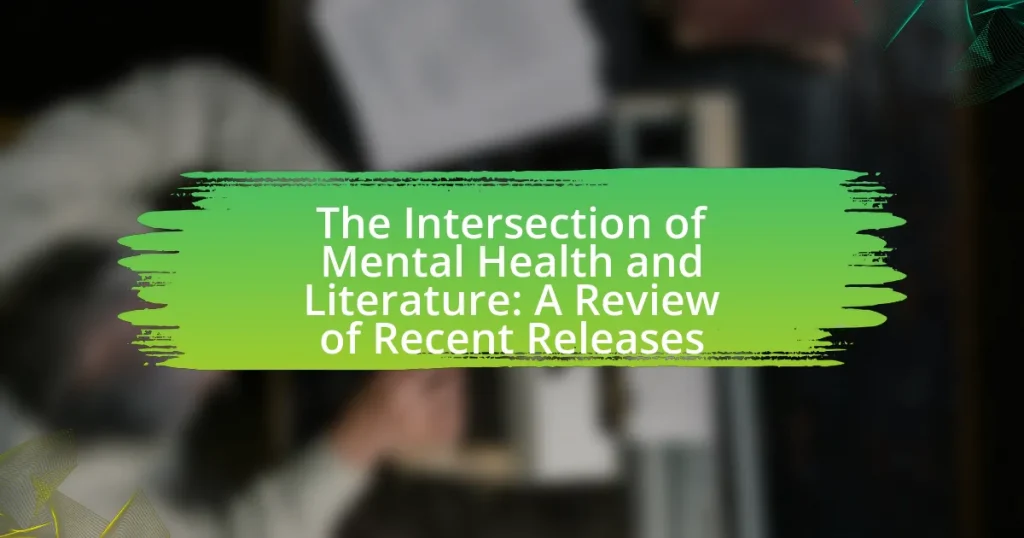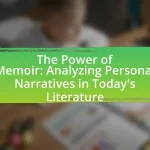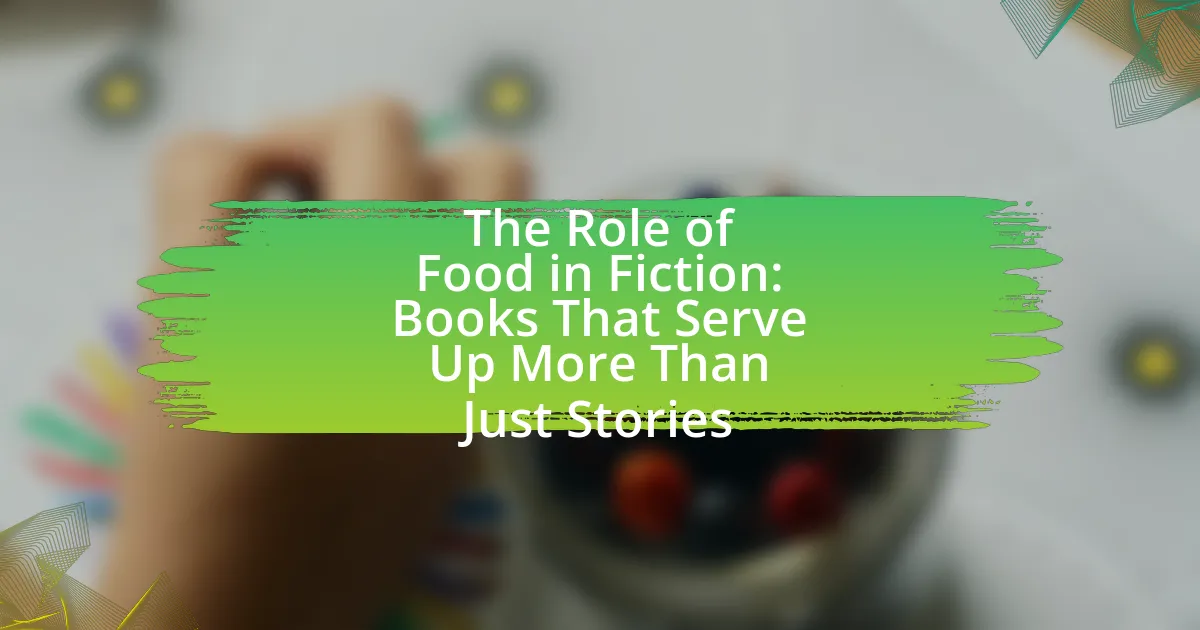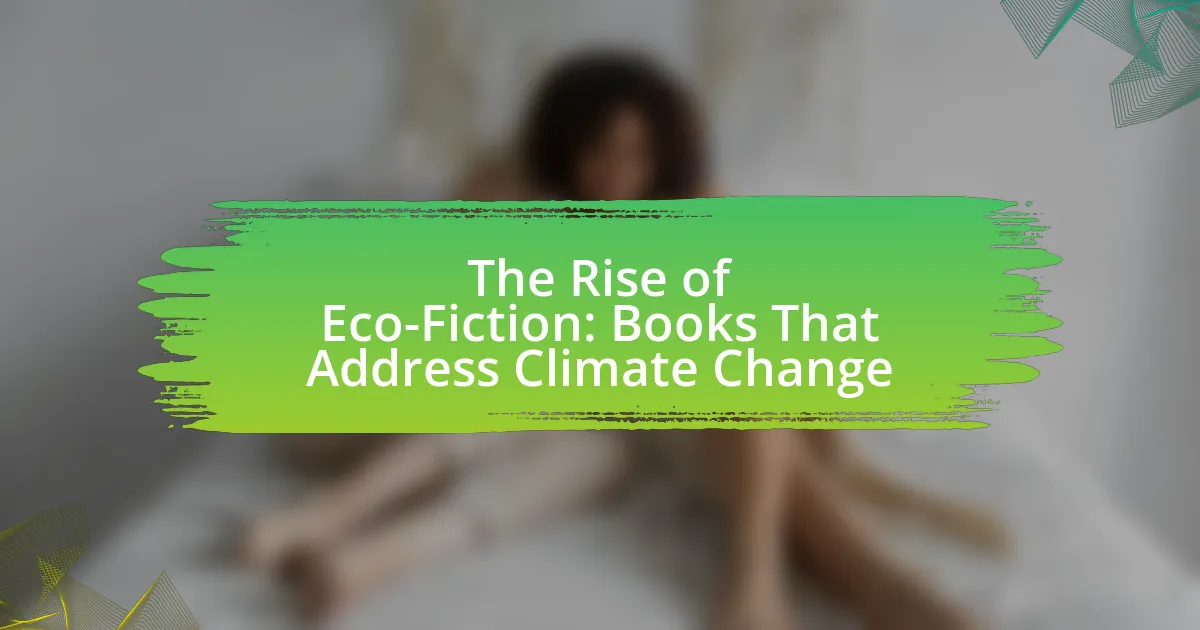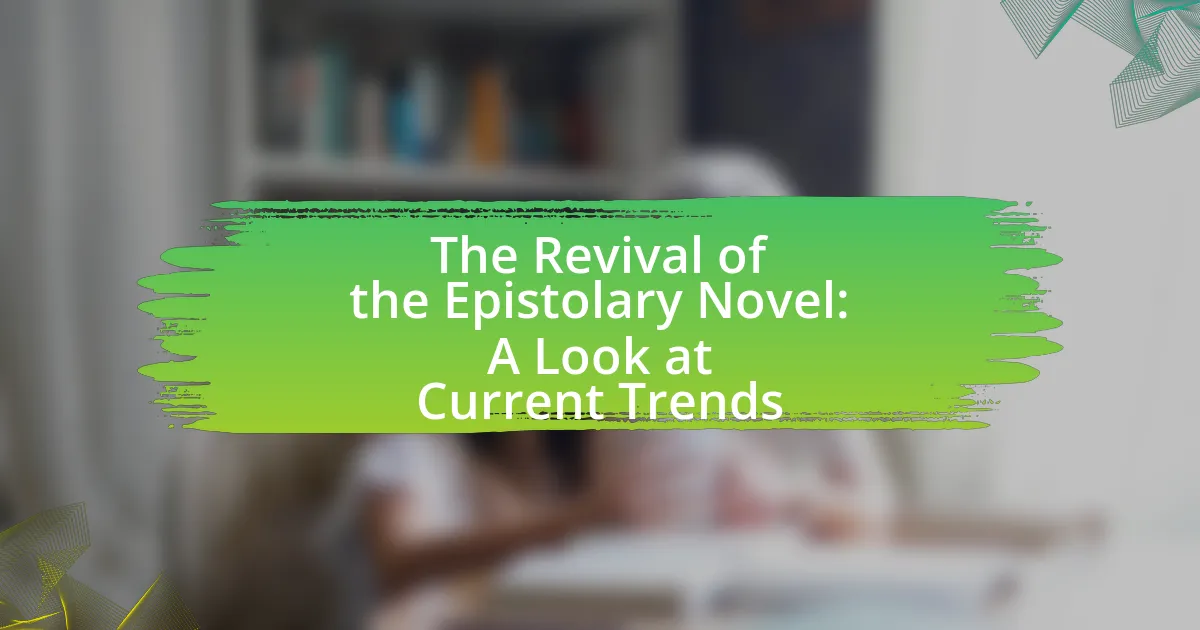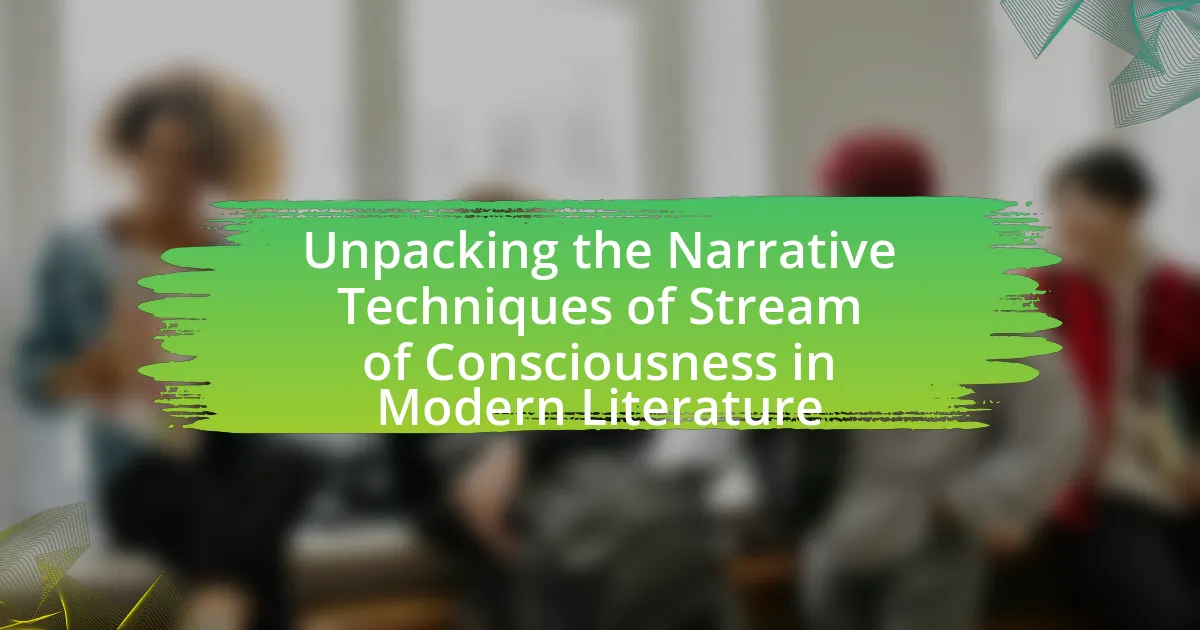The article examines the intersection of mental health and literature, highlighting how literary works explore psychological themes and experiences related to mental health disorders. It discusses the portrayal of mental health issues in literature, including anxiety, depression, and trauma, through character development and narrative techniques. The article also reviews recent literary releases that address these themes, such as “The Midnight Library” by Matt Haig and “What Happened to You?” by Oprah Winfrey and Bruce Perry, and emphasizes the significance of literature in shaping public perception and fostering empathy towards mental health challenges. Additionally, it outlines how readers can engage with mental health literature and the resources available for further exploration of these topics.
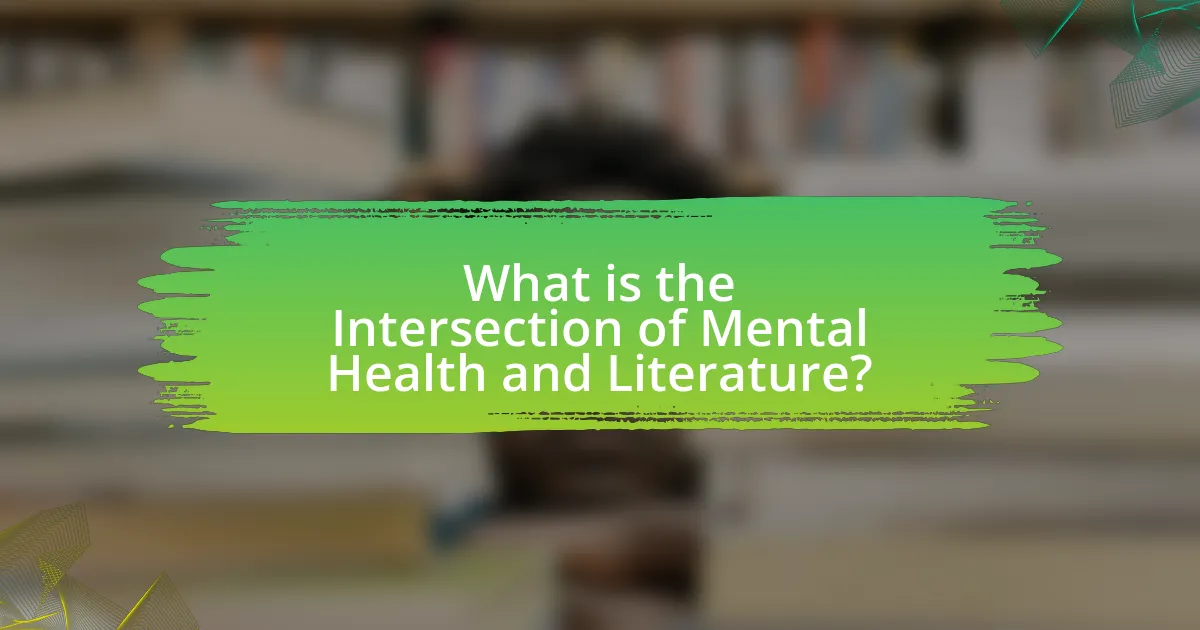
What is the Intersection of Mental Health and Literature?
The intersection of mental health and literature involves the exploration of psychological themes, experiences, and disorders through literary works. Literature serves as a medium for authors to express their own mental health struggles or to depict the experiences of characters facing mental health challenges, thereby fostering empathy and understanding among readers. For instance, works like Sylvia Plath’s “The Bell Jar” and Virginia Woolf’s “Mrs. Dalloway” provide insights into depression and anxiety, illustrating how literature can reflect and influence societal perceptions of mental health. This connection is further supported by research indicating that reading literature can enhance emotional intelligence and promote mental well-being, as noted in studies published in journals such as “Psychological Science.”
How do mental health themes manifest in literature?
Mental health themes manifest in literature through character development, narrative structure, and thematic exploration. Authors often depict characters grappling with mental health issues, illustrating their internal struggles and societal perceptions, which can foster empathy and understanding among readers. For instance, in works like “The Bell Jar” by Sylvia Plath, the protagonist’s descent into depression is portrayed with stark realism, allowing readers to engage with the complexities of mental illness. Additionally, literature often employs symbolism and metaphor to represent mental health challenges, as seen in “The Perks of Being a Wallflower” by Stephen Chbosky, where the protagonist’s letters serve as a means of processing trauma and emotional turmoil. These representations not only reflect individual experiences but also comment on broader societal attitudes towards mental health, making literature a powerful medium for exploring and destigmatizing these themes.
What are common mental health issues explored in recent literary works?
Common mental health issues explored in recent literary works include anxiety, depression, trauma, and identity disorders. These themes are prevalent as authors seek to reflect contemporary societal challenges and personal struggles. For instance, novels like “The Midnight Library” by Matt Haig delve into existential crises and depression, while “The Bell Jar” by Sylvia Plath continues to resonate with readers through its portrayal of mental illness. Additionally, works such as “The Perks of Being a Wallflower” by Stephen Chbosky address anxiety and trauma, illustrating the impact of these issues on youth. The exploration of these topics in literature not only raises awareness but also fosters empathy and understanding among readers.
How do authors portray mental health experiences in their narratives?
Authors portray mental health experiences in their narratives by using character development, emotional depth, and realistic scenarios that reflect the complexities of mental health conditions. For instance, novels often depict characters struggling with anxiety, depression, or trauma, allowing readers to empathize with their internal battles. Research indicates that literature can serve as a powerful tool for understanding mental health, as seen in works like “The Bell Jar” by Sylvia Plath, which provides an intimate look at depression through the protagonist’s perspective. This portrayal not only raises awareness but also fosters discussions about mental health, illustrating its impact on individuals and society.
Why is the intersection of mental health and literature significant?
The intersection of mental health and literature is significant because literature serves as a powerful medium for exploring and expressing mental health experiences, fostering empathy and understanding. Through narratives, authors can depict the complexities of mental health issues, allowing readers to gain insights into the emotional and psychological struggles faced by individuals. For instance, works like Sylvia Plath’s “The Bell Jar” and Virginia Woolf’s “Mrs. Dalloway” provide profound reflections on mental illness, illustrating its impact on identity and society. This literary exploration not only raises awareness but also contributes to destigmatizing mental health, as evidenced by studies showing that literature can enhance emotional intelligence and promote discussions around mental health topics.
How can literature influence public perception of mental health?
Literature can significantly influence public perception of mental health by shaping narratives and fostering empathy. Through storytelling, literature provides insights into the experiences of individuals with mental health conditions, which can challenge stereotypes and reduce stigma. For example, novels like “The Bell Jar” by Sylvia Plath and “A Long Way Down” by Nick Hornby depict the complexities of mental illness, allowing readers to understand the emotional and psychological struggles involved. Research indicates that exposure to such narratives can lead to increased awareness and understanding, as evidenced by a study published in the journal “Psychological Science,” which found that reading fiction enhances empathy and social cognition. Thus, literature serves as a powerful tool in transforming societal attitudes towards mental health.
What role does storytelling play in mental health awareness?
Storytelling plays a crucial role in mental health awareness by providing a platform for individuals to share their experiences and foster empathy. Through narratives, people can articulate their struggles with mental health, which helps to destigmatize these issues and encourages open dialogue. Research indicates that personal stories can significantly impact public perception; for instance, a study published in the journal “Psychological Science” found that narratives can enhance understanding and compassion towards those with mental health conditions. By engaging audiences emotionally, storytelling not only raises awareness but also promotes a supportive community for those affected by mental health challenges.
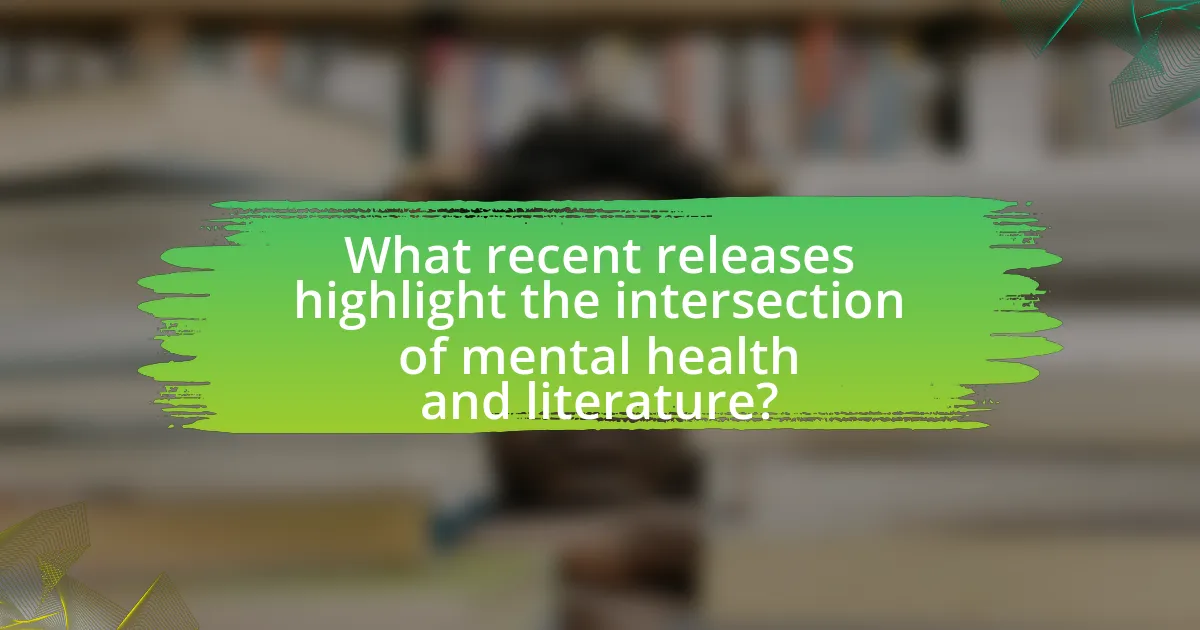
What recent releases highlight the intersection of mental health and literature?
Recent releases that highlight the intersection of mental health and literature include “The Midnight Library” by Matt Haig and “What Happened to You?” by Oprah Winfrey and Bruce Perry. “The Midnight Library” explores themes of regret, anxiety, and the choices that shape our lives, illustrating how mental health impacts personal narratives. “What Happened to You?” delves into trauma and its effects on mental well-being, emphasizing the importance of understanding the past to foster healing. Both works have received critical acclaim for their insightful treatment of mental health issues, making them significant contributions to contemporary literature.
Which authors have recently focused on mental health in their works?
Authors such as Matt Haig, Ocean Vuong, and Sally Rooney have recently focused on mental health in their works. Matt Haig’s “Reasons to Stay Alive” explores depression and anxiety, providing personal insights and coping strategies. Ocean Vuong’s “On Earth We’re Briefly Gorgeous” addresses trauma and mental health through the lens of identity and family. Sally Rooney’s “Beautiful World, Where Are You” delves into the complexities of relationships and mental well-being. These authors contribute significantly to the discourse on mental health through their narratives and character development.
What themes do these authors explore in their narratives?
Authors exploring the intersection of mental health and literature often delve into themes such as trauma, identity, resilience, and the stigma surrounding mental illness. These narratives frequently illustrate the complexities of mental health experiences, highlighting how trauma shapes identity and influences personal resilience. For instance, many contemporary works depict characters grappling with anxiety and depression, thereby shedding light on societal perceptions and the stigma associated with these conditions. This thematic exploration not only fosters empathy but also encourages dialogue about mental health, making it a crucial aspect of modern literature.
How have these works been received by critics and readers?
The works exploring the intersection of mental health and literature have generally received positive feedback from both critics and readers. Critics have praised these works for their nuanced portrayal of mental health issues, often highlighting their ability to foster empathy and understanding. For instance, a review in The New York Times noted that such literature provides “a vital lens into the complexities of mental health,” indicating a strong critical reception. Readers have also resonated with these narratives, as evidenced by high ratings on platforms like Goodreads, where many titles in this genre have achieved scores above 4 out of 5 stars. This combination of critical acclaim and reader appreciation underscores the significant impact these works have had in raising awareness and promoting discussions around mental health.
What genres are most prevalent in recent literature addressing mental health?
Recent literature addressing mental health predominantly features the genres of memoir, fiction, and self-help. Memoirs often provide personal narratives that explore individual experiences with mental health issues, such as “The Glass Castle” by Jeannette Walls, which illustrates the impact of familial relationships on mental well-being. Fictional works, like “The Perks of Being a Wallflower” by Stephen Chbosky, delve into the complexities of mental health through relatable characters and storylines. Self-help books, such as “The Body Keeps the Score” by Bessel van der Kolk, offer insights and strategies for understanding and managing mental health conditions. These genres collectively contribute to a broader understanding of mental health in contemporary literature.
How does fiction differ from non-fiction in discussing mental health?
Fiction differs from non-fiction in discussing mental health primarily through narrative techniques and emotional engagement. Fiction often employs storytelling, character development, and imaginative scenarios to explore mental health themes, allowing readers to empathize with characters’ experiences and emotions. In contrast, non-fiction presents factual information, research findings, and personal accounts, focusing on clinical perspectives and real-world implications of mental health issues. For example, novels like “The Bell Jar” by Sylvia Plath illustrate the protagonist’s internal struggles, while non-fiction works like “The Body Keeps the Score” by Bessel van der Kolk provide evidence-based insights into trauma and healing. This distinction highlights how fiction can evoke emotional responses and foster understanding, whereas non-fiction aims to inform and educate through factual content.
What unique perspectives do poetry and memoirs offer on mental health?
Poetry and memoirs provide unique perspectives on mental health by offering personal, emotional insights and fostering empathy through lived experiences. Poetry often distills complex emotions into concise, evocative language, allowing readers to connect with feelings of anxiety, depression, or trauma in a profound way. For instance, works like “The Sun and Her Flowers” by Rupi Kaur explore themes of healing and self-acceptance, resonating with individuals facing similar struggles. Memoirs, on the other hand, present detailed narratives that chronicle an individual’s journey through mental health challenges, such as in “The Center Cannot Hold” by Elyn Saks, which provides an in-depth look at living with schizophrenia. These narratives not only validate the experiences of those with mental health issues but also educate readers, breaking down stigma and fostering understanding.
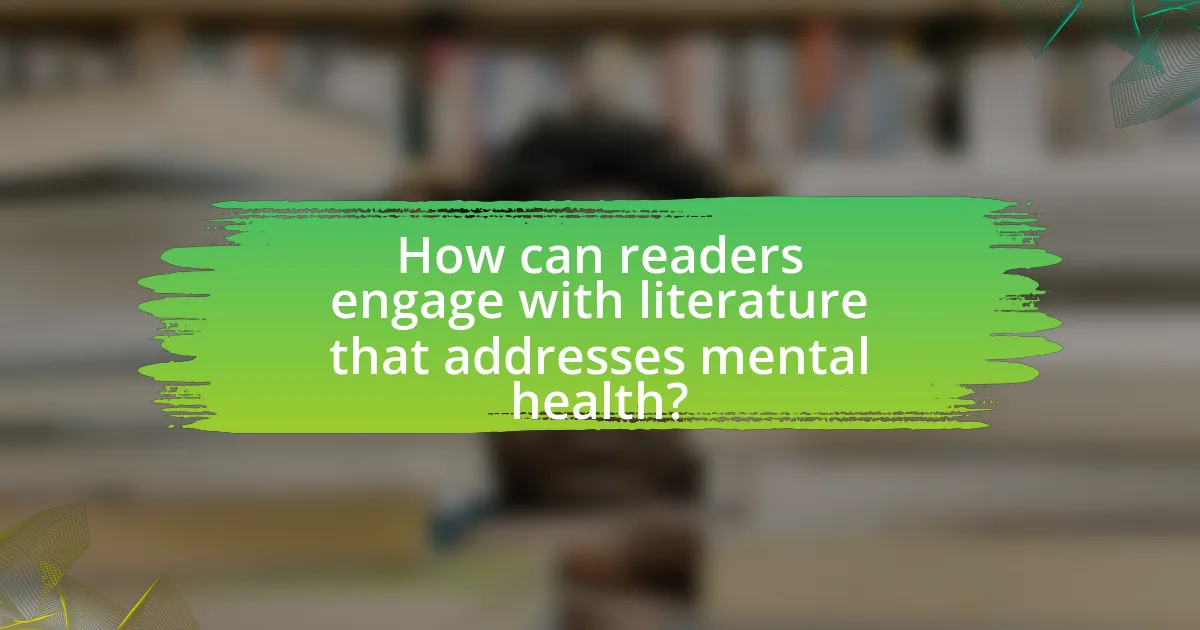
How can readers engage with literature that addresses mental health?
Readers can engage with literature that addresses mental health by actively participating in discussions, book clubs, and online forums focused on these themes. Engaging in conversations about mental health literature allows readers to share personal insights and experiences, fostering a deeper understanding of the subject. Research indicates that discussing mental health topics can reduce stigma and promote awareness, as seen in studies like “The Impact of Literature on Mental Health Awareness” published in the Journal of Mental Health, which highlights how literature can serve as a catalyst for dialogue and education.
What are effective ways to approach reading literature on mental health?
Effective ways to approach reading literature on mental health include critically evaluating the credibility of sources, engaging with diverse perspectives, and applying reflective practices. Credibility can be assessed by examining the author’s qualifications, the publication’s reputation, and the presence of peer-reviewed research. Engaging with diverse perspectives allows readers to understand various experiences and interpretations of mental health, which is essential given the complexity of the subject. Reflective practices, such as journaling or discussing insights with others, enhance comprehension and personal connection to the material. These methods are supported by research indicating that critical engagement and reflection improve understanding and retention of complex topics, particularly in mental health literature.
How can readers reflect on their own mental health while reading?
Readers can reflect on their own mental health while reading by actively engaging with the themes and characters in the literature. This engagement allows readers to identify their feelings and thoughts in relation to the experiences depicted in the text. For instance, when a character faces anxiety or depression, readers can consider their own similar experiences, fostering self-awareness and emotional processing. Research indicates that literature can serve as a mirror for personal experiences, enabling readers to explore their mental health in a safe context. A study published in the Journal of Medical Humanities found that reading fiction enhances empathy and emotional intelligence, which are crucial for understanding one’s mental state.
What discussions can arise from reading these works?
Reading works that explore the intersection of mental health and literature can lead to discussions about the representation of mental health issues in society. These discussions often focus on how literature can shape public perception, reduce stigma, and foster empathy towards individuals experiencing mental health challenges. For instance, narratives that depict mental illness authentically can encourage readers to engage in conversations about their own experiences or those of others, promoting a deeper understanding of mental health conditions. Additionally, the impact of literary therapy as a tool for healing and self-exploration can be a significant topic, as evidenced by studies showing that reading can improve emotional well-being and provide coping mechanisms for individuals facing mental health struggles.
What resources are available for readers interested in mental health literature?
Readers interested in mental health literature can access a variety of resources, including academic journals, online platforms, and community organizations. Academic journals such as the Journal of Mental Health and the American Journal of Psychiatry publish peer-reviewed articles that explore mental health topics in depth. Online platforms like Goodreads and LibraryThing offer user-generated lists and reviews of mental health books, helping readers discover new titles. Additionally, organizations such as the National Alliance on Mental Illness (NAMI) provide reading lists and resources that focus on mental health awareness and education. These resources collectively support readers in finding valuable literature related to mental health.
How can book clubs facilitate conversations about mental health themes?
Book clubs can facilitate conversations about mental health themes by providing a structured environment for discussion and reflection on relevant literature. Through the selection of books that address mental health issues, participants can explore diverse perspectives and experiences, fostering empathy and understanding. Research indicates that discussing literature can enhance emotional intelligence and promote mental well-being, as it allows individuals to connect personal experiences with the narratives presented in the texts. Furthermore, book clubs often encourage open dialogue, which can help to destigmatize mental health topics and create a supportive community for sharing personal stories and insights.
What online platforms provide recommendations for mental health literature?
Online platforms that provide recommendations for mental health literature include Goodreads, which features user-generated reviews and ratings for a wide range of mental health books, and LibraryThing, which allows users to catalog and discuss their collections, including mental health titles. Additionally, platforms like PsychCentral offer curated lists and articles that highlight significant mental health literature, while Amazon provides user reviews and recommendations based on purchasing patterns. These platforms are widely recognized for their extensive databases and community engagement, making them reliable sources for discovering mental health literature.
